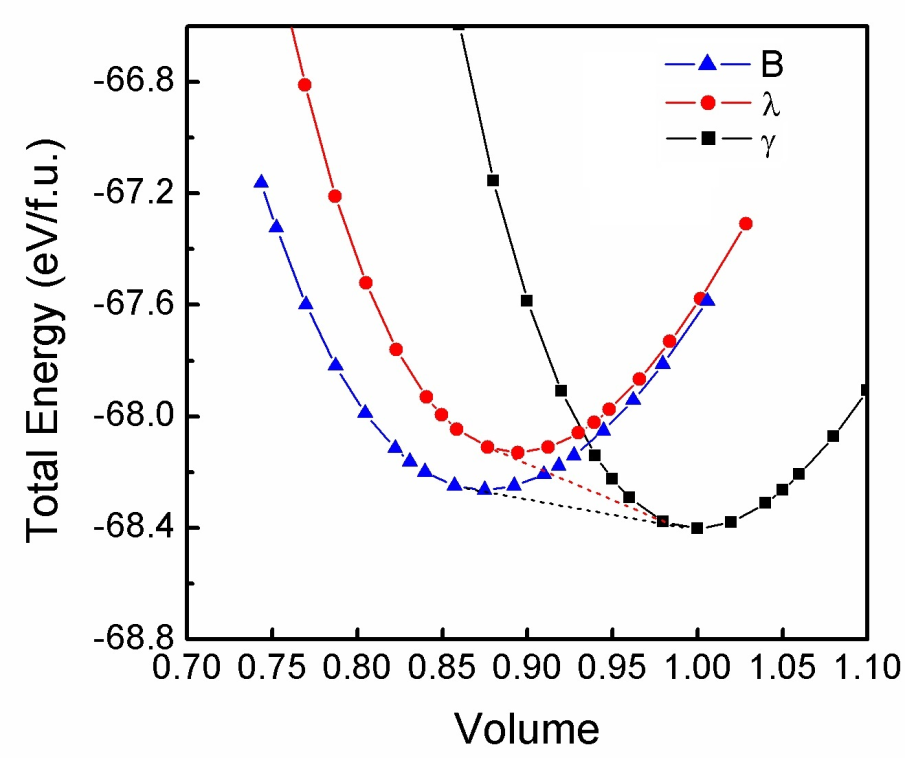Tantalum pentoxide (Ta2O5) is a semiconducting material which has broad technological applications. For instance, the excellent dielectric properties make Ta2O5 a good candidate material to replace SiO2 as the insulating layer for advanced electronic devices.
Owing to its high refractive index, Ta2O5 could also be applied to the coating material of optical devices (e.g., lens of camera) and the instruments for ultraprecise measurement such as the well-known Laser Interferometer Gravitational-wave Observatory (LIGO). In LIGO's two long arms which are vertically arranged to each other, alternating thin layers of SiO2 and Ta2O5 serve as mirror coatings for the test masses of the detectors. Additionally, Ta2O5 finds its place in other applications such as corrosion resistant coatings and catalysts like water splitting.
Despite the efforts of more than half a century, the low-temperature crystal structures of Ta2O5, namely, L-Ta2O5, still remain an issue of debate. Different types of crystals have been reported for L-Ta2O5: e.g., LSR, LGMR, βAL, βR, λ, δ, B, Z, etc. Previous studies found that, the B type crystal of Ta2O5 is the most stable, and λ is the second.
Then one may ask, is it possible to find new type of crystals of L-Ta2O5?
Recently, researchers from the Institute of Solid State Physics (ISSP), Hefei Institutes of Physical Science and Tohoku University examined this topic and made positive reply to this problem.
Using most advanced method of theoretical calculations, they predicted the existence of a new crystal type of L-Ta2O5 (named as γ-Ta2O5).
It is demonstrated by calculations that the new type of L-Ta2O5 crystal is much more stable than any types of Ta2O5 crystals reported previously. If the crystal is compressed, it may change to the known B or λ type crystals of Ta2O5.
On the other hand, common features are found not only in the local arrangement of atoms of the new type of crystal and the other types of Ta2O5 crystals, but also in their dynamical properties such as the stretching and dangling motions of the atoms .
"We are very happy that we can have our contribution to resolve such a long-standing structural problem of Ta2O5 and we are in touch with the some experts in crystal growth from the IOP of CAS, and discuss about future collaborations", said YANG.
"I am happy to know that Ta2O5 can have such a new phase. Due to the high melting point of elemental Ta, it is not so easy to get controllable growth of Ta2O5 thin films", Prof. MA Xucun from Tsinghua University, a recipient of the National Science Fund for Distinguished Young Scholars, commented.
This work is financially supported by the National Natural Science Foundation of China (Grant No. 11474285).
Link to the paper: Prediction of new ground-state crystal structure of Ta2O5

Fig. 1. (a)-(e): Schematics of some typical crystals of Ta2O5. (f) The predicted γ-Ta2O5. (Image by YANG Yong)

Fig. 2. The total energies of B, λ, and γ-Ta2O5 as a function of crystal volume, where the pressure-induced transformation of crystal structure is indicated by dashed lines. (Image by YANG Yong)
Contact:
ZHOU Shu
Hefei Institutes of Physical Science (http://english.hf.cas.cn/)
Email: zhous@hfcas.ac.cn
 Tel: +86-551-65591206
Tel: +86-551-65591206
 Fax: +86-551-65591270
Fax: +86-551-65591270
 Emai: zhous@hfcas.ac.cn
Emai: zhous@hfcas.ac.cn
 350 Shushanhu Road
350 Shushanhu Road